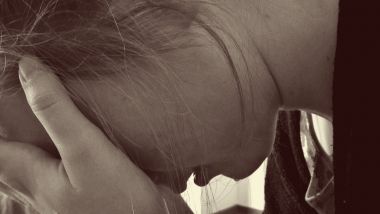Lapsed Catholic Tells Of Being Rescued From Anorexia By Returning To The Faith
A lapsed Catholic has described how returning to a 'Eucharistic faith' saved her from a serious eating disorder.

Emily Stimpson Chapman, the author of The Catholic Table: Finding Joy Where Food and Faith Meet, has told of her battle with anorexia nervosa and binge-eating 16 years ago.
Writing in The National Catholic Register, Chapman explained: 'For six years, between the ages of 19 and 25, I tried and failed to heal. I went to therapy. I read my Bible. When it came to recovering from an eating disorder, mere faith wasn't enough for me. What I needed was a Eucharistic faith.
'I begged God for help. But nothing changed. No matter how much I prayed, I still hated my body, feared fat and used food as a means of controlling my world.'
Chapman said that at that time she failed to 'see the world with Catholic eyes'. She wrote: 'Underlying my battle with food and self was a tangled skein of anxieties and insecurities, made worse by a materialist vision of the universe I'd acquired from the culture around me. Despite my Catholic upbringing, I didn't see the world with Catholic eyes. I didn't see a world made by a loving God. I didn't see a universe teeming with grace, where everything — from butterflies to bread — bore the mark of its Maker. Nor did I see my body as the living image of God.'
The writer described her battle with the eating disorder: 'To me, my body was a problem to be erased; the less of it there was, the better. Likewise, food was the enemy; it was evil matter that had to be controlled. When I succeeded at denying myself food, I felt strong. When I didn't succeed, I felt weak; I had failed yet again.'
Chapman said that she did maintain a faith but it was not strong enough to see her through at that time. 'Through it all, I believed in God. I knew on some level that he loved me. I also knew it was wrong to starve myself or eat too much. That knowledge didn't stop me from seeing my feminine form as a problem or food as an opponent,' she wrote. 'With time, however, it did help me change my behaviour. I didn't want to offend God, so I began trying harder to eat what I should — no less, no more. Slowly, I started gaining back the weight I needed to gain.
'But the world inside my head never changed. The same destructive thought patterns replayed themselves over and over again: My body was a problem; food was the enemy. By the time I turned 25, I looked well on the outside. On the inside, though, I was as sick as ever.'
The turning point, she said, was returning to Mass.
'After six long years away from the Church, a co-worker helped me find my way home. And there, in the Mass, I received Christ as food. Bread became Body. Wine became Blood. God gave himself to me to eat and drink. That was the most intimate communion I had with him. That was how he gave his life to me, through eating, body to body, flesh to flesh. And that, eventually, did what no "mere" faith could do. It brought healing.'
She added: 'The more Eucharistic my faith became...the more my vision changed. I started seeing how much God delighted in matter: He made it, he sustained it in being, and he used it to give his life to us. Bread and wine, oil and water, consecrated hands, and the bodies of husbands and wives were all chosen by God to be vehicles of sanctifying grace. His life passes through them on the way to us. And while this makes those particular forms of matter holy, it also illuminates all matter with a divine light and purpose.
'That in turn, helped change how I saw my body. Paired with my reading of St. John Paul II's deeply sacramental theology of the body, I started seeing my body — not just my soul — as the image of God. I recognized that it was a temple to be cared for, not a problem to be controlled. And I came to appreciate my feminine curves as the physical sign of my womanly soul. Together, as a perfect union of body and soul, I was called to image God's nurturing, nourishing love as only a woman can.'











